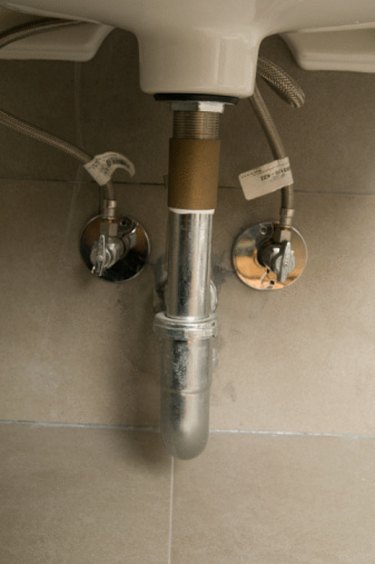Things You'll Need
Current Edition of the Uniform Plumbing Code*
- Check with your local building department to determine what code they have adopted. Sometimes your local jurisdiction is enforcing the previous edition or they may have their own code (i.e. Los Angeles).
Notebook
Pencil
Calculator (optional)
Measuring tape - 25-foot to 35-foot recommended
Magic Marker or Sharpie

Installing piping in a remodel or a new house requires some math skills, soldering ability, some knee pads and a little knowledge of the plumbing code. Most plumbing systems consist of what's known as DWV, which is drain, water and vent. In order to configure your system, you must decide what type of fixtures you want to install. Each fixture has an assigned unit value for the supply and for the drain.
Determining Fixture Values
Step 1

Write down all of the plumbing fixtures you wish to install down the left side of a notebook page. Make two vertical columns to the right of your fixture list. Title the first column Water Supply Fixture Units (WSFU) and the second vertical column Drainage Fixture Units (DFU).
Video of the Day
Step 2

Open your Uniform Plumbing Code (UPC) book and go to the chapter titled "Water Supply and Distribution." If you do not have a volume of the UPC, search the Internet and you will usually find the information you need at no cost. If the Internet option is also a problem, go to your local building department and ask them to make you a copy of the WSFU and DFU charts.
Step 3

Using the WSFU chart, find the type of fixture that you are installing and write down the associated value. Enter the number that most closely resembles the type of plumbing fixture you are installing. If there are two values and you are uncertain which to choose, it is usually recommended to select the larger number. After completing the WSFU chart, repeat the process in the second vertical column for the DFU's.
Step 4

Add the values from both columns and now you have your supply and drain fixture unit totals. Use these figures to now determine the diameter of your piping and the lengths you will need to purchase. Use the drain fixture calculation to determine the size of your venting system with the information provided in the UPC "Vents" chapter.
Tip
Calculations of this nature can be relatively easy to perform, but most times plumbing is better left to the professionals. If you think you can do it and you are willing to give it a try, plumbing can be a fun weekend chore. The tape measure and sharpie marker are included in your list of items. You will need them if you decide to proceed with purchasing the pipe based on your calculations.
Warning
If you have any uncertainty or are uncomfortable with math calculations, consult a professional plumber.
Video of the Day